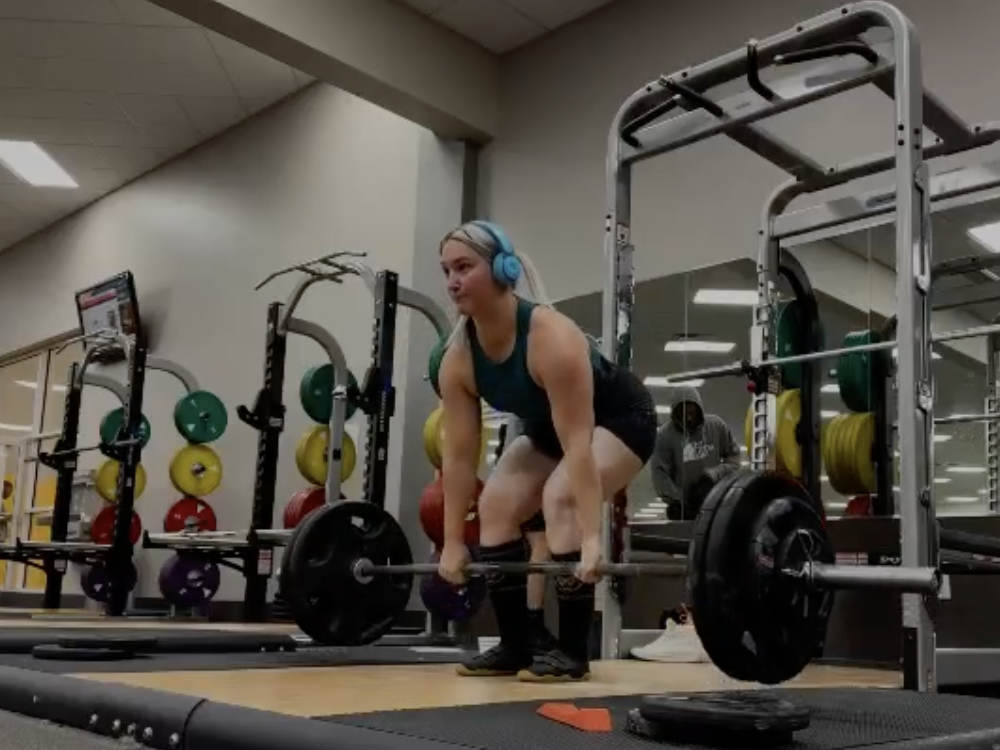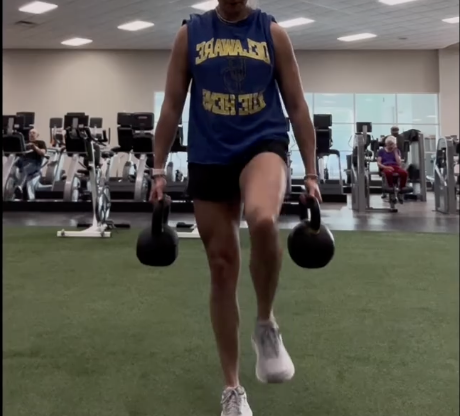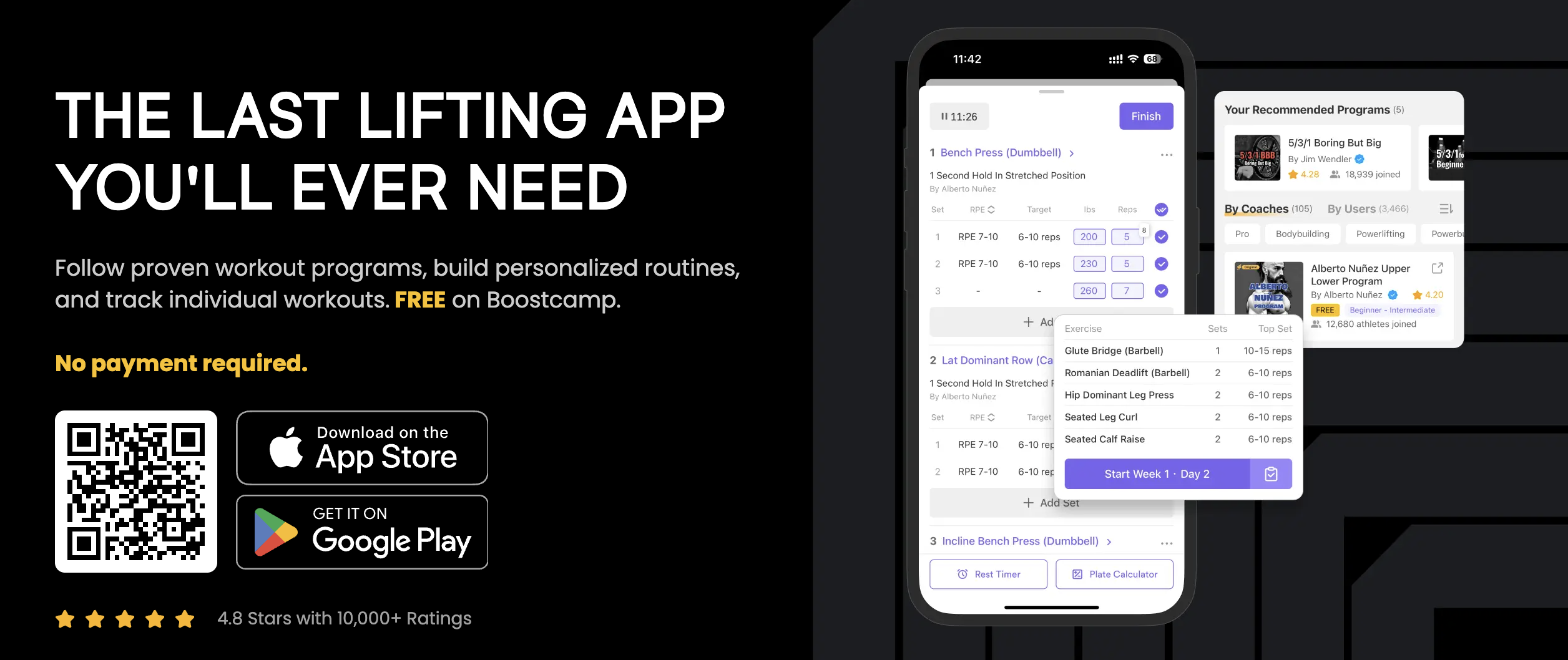5 Top Deadlift Alternatives
Written by The Boostcamp Editors
Deadlift Alternatives for Strength Training
It is no secret that deadlifts are a great exercise, and a popular in all types of strength training, utilized in many programs for powerlifting and even bodybuilding, but not everyone is suited to performing them. Whether it is an injury or some form of a mobility issue, or another aspect that makes it difficult to perform the exercise, you may not be able to include deadlifts in your training routine. Fortunately, there are plenty of excellent deadlift alternatives that can provide similar benefits without the risks associated with deadlifts. In this post, our team at Boostcamp will explore nine different deadlift alternatives, including the great exercise, that you can incorporate into your workout routine. We'll discuss the importance of deadlifts in strength training, and how these alternative exercises can be just as effective. From the trap bar deadlift to cable pull-throughs and everything in between, we've got you covered.
So whether you're looking for a change of pace or need to avoid traditional deadlifts altogether, keep reading to learn more!
Understanding the Importance of Deadlifts in Strength Training

Deadlifts are a cornerstone compound exercise in strength training that target multiple muscle groups, providing overall strength and power. They not only build a strong back but also improve core stability. Incorporating deadlifts into your routine can enhance athletic performance and promote good posture, preventing injuries and muscular imbalances. With deadlifts, you engage a wide range of muscles, including the quads, lats, rhomboids, erector spinae muscles, and glutes. The deadlift is a functional exercise that mimics real-life movements, making it an essential part of any strength training regimen. Understanding the importance of deadlifts is key to achieving a well-rounded and effective workout routine.
Deadlifts Aren't for Everyone
Not everyone is a suitable candidate for incorporating deadlifts into their training routine. Individuals with lower back issues should consult a professional before attempting this exercise to avoid exacerbating their condition. Beginners, too, should approach deadlifts with caution, starting with lighter weights and focusing on proper form to prevent injury. Deadlifts require a certain level of mobility and flexibility, so it's important to assess your capabilities before incorporating them into your routine. People with certain medical conditions may need to modify or avoid deadlifts altogether. Ultimately, listening to your torso and not pushing beyond your limits is key to a safe and effective workout.
Deadlift Alternative 1: Trap Bar Deadlift
The trap bar deadlift is a great alternative to the conventional deadlift. It targets the same muscle groups while putting less stress on the lower back. The trap bar allows for a more neutral grip, reducing strain on the wrists and shoulders. Proper form is crucial for maximizing the benefits of the trap bar deadlift. It's a suitable exercise for all fitness levels. Plus, incorporating the trap bar deadlift into your routine can help improve core strength, develop strong quads and lats, and enhance coordination. It's a great way to work your posterior chain muscles without the risk of back pain.
How to Perform the Trap Bar Deadlift Correctly
To perform the trap bar deadlift correctly, start by standing in the center of the trap bar with your feet hip-width apart. Bend at the hips and knees, keeping your back flat and chest lifted. Grip the handles of the trap bar and stand up, driving through your heels. Throughout the movement, remember to keep your shoulders back and down. When lowering the weight back down, do so with control while maintaining a straight back, as rounding the back can cause injury. The trap bar deadlift is a great deadlift alternative that targets your quads, glutes, hamstrings, core, and posterior chain muscles. It's a good thing to have in your strength training routine. Reverse the motion by breaking at the hip and sinking into flexion again.
Deadlift Alternative 2: Glute Bridge
The glute bridge is an excellent exercise for targeting the glutes and hamstrings. It can help improve hip stability and strengthen the posterior chain. This exercise can be done with just bodyweight or with added resistance. Proper form is essential to effectively activate the glutes. It's a great way to work those posterior chain muscles without putting too much stress on the lower back. Whether you're a beginner or advanced lifter, the glute bridge is suitable for all fitness levels. Incorporate it into your routine for a good deadlift alternative that will help you build strength and improve your glute and hamstring activation.
Steps to Execute a Perfect Glute Bridge
To execute a perfect glute bridge, start by lying on your back with knees bent and feet flat on the ground. Press through the heels to lift the hips off the ground, engaging the glutes. Remember to maintain a straight line from the knees to the shoulders. Hold for a brief pause at the top, focusing on squeezing the glutes, before lowering back down. By incorporating this exercise into your routine, you'll strengthen your posterior chain muscles, improve core strength, and enhance coordination. The glute bridge is a great alternative to deadlifting and an effective way to target the glutes and hamstrings.
Deadlift Alternative 3: Hip Thrusts
Hip thrusts, which target the glutes and hamstrings like deadlifts, are an excellent alternative for your strength training routine. They can help improve strength, power, and overall aesthetics in the lower body. Whether you choose to use a barbell, dumbbells, or just your bodyweight, hip thrusts can be easily modified to suit your fitness level. However, proper technique is crucial to effectively activate the glutes and reap the benefits. Intermediate to advanced lifters will find hip thrusts particularly suitable for their workouts. Adding this exercise to your regimen can be a great way to enhance your posterior chain muscles, including the rear foot, and achieve your fitness goals.
Correct Form and Technique for Hip Thrusts
To perform hip thrusts correctly, start by sitting on the ground with a bench or elevated surface behind you. Place a barbell or weight across your hips and position your shoulder blades against the bench. Plant your feet firmly on the ground, hip-width apart. Drive through the heels to lift the hips upward, squeezing the glutes at the top. Lower the hips back down with control, maintaining tension in the glutes. Hip thrusts are a great deadlift alternative that targets the glute-ham muscles and can help improve overall lower body strength and aesthetics. Complete 3 sets of up to 20 reps to challenge yourself and progressively increase your strength.
Alternative 4: Russian Kettlebell Swings
Russian kettlebell swings offer a dynamic and functional movement pattern that provides a full-body workout with a focus on the posterior chain. This exercise is excellent for improving strength, power, and cardiovascular fitness. It is important to prioritize proper form and technique when performing kettlebell swings to ensure safety and effectiveness. The beauty of this exercise is that it can be modified to suit different fitness levels and goals. Whether you're a beginner or an experienced lifter, incorporating pistol squats, an advanced exercise that strengthens your posterior chain while building your flexibility and balance, into your routine can be a great way to enhance your workouts and target your posterior chain muscles effectively.
Proper Execution of Russian Kettlebell Swings
Mastering the proper execution of Russian Kettlebell Swings is key to reaping the maximum benefits from this exercise. To begin, stand with your feet shoulder-width apart, grasping the kettlebell with both hands. Make sure to maintain a straight back and engage your core as you hinge at the hips. The next step is to swing the kettlebell between your legs, generating power by forcefully extending your hips. As the kettlebell swings forward, allow it to reach chest height while keeping your arms relaxed. To control the downward swing, bend your knees and hinge at the hips again. By following these steps, you can effectively engage your posterior chain muscles and achieve a great deadlift alternative that improves coordination and core strength.
Deadlift Alternative 5: Good Morning With Resistance Bands
Engage your glutes and hamstrings with the effective exercise known as the Good Morning With Resistance Bands. This is a great way to strengthen your posterior chain, targeting your lower back, hamstrings, and glutes. By performing this exercise, you can improve your hip hinge and range of motion, making it a valuable alternative to traditional deadlifts. The resistance bands provide added resistance, helping to challenge your muscles and promote growth. Incorporating this exercise into your routine is a good thing for those seeking deadlift alternatives, and it can be performed with proper form and coordination.
The Right Way to Perform Good Morning With Resistance Bands
To perform a good morning with resistance bands, start by placing the band under your feet and holding the ends at shoulder width. Keep your legs straight and hinge forward at the hips, maintaining a slight bend in your knees and a neutral spine. Engage your glutes and hamstrings to return to the starting position, focusing on proper form and control throughout the movement. This exercise targets your posterior chain muscles, including your lower back, hamstrings, and glutes. It's a great deadlift alternative that can help strengthen these muscles while avoiding the risk of back pain.
Deadlift Alternative 6: Farmer’s Carry

Strengthen your grip and upper body with farmer's carries. This exercise engages your core and stabilizer muscles, helping to improve your posture and overall strength. Farmer's carries are a simple yet effective way to challenge yourself in your full-body routine. By carrying heavy weights in each hand and walking, you activate your back muscles, lats, glute-ham, quads, forearms, and calves. The coordination required for this exercise also benefits your abs, rhomboids, and biceps femoris. If you're experiencing back pain or want to switch up your deadlifting routine, farmer's carries are a great deadlift alternative that targets your posterior chain muscles.
Performing Farmer’s Carry Effectively and Safely
Performing the Farmer's Carry effectively and safely requires proper form and technique. Start by standing upright with a dumbbell or kettlebell in each hand. Keep your posture tall and engage your core muscles throughout the exercise. As you walk, focus on maintaining balance and control, moving at a slow and steady pace. Remember to keep your shoulders down and back, avoiding any shrugging. It's important to start with lighter weights and gradually increase as you become more comfortable and confident in your ability to perform the exercise. The Farmer's Carry is a great alternative to deadlifting that engages your quads, core, and back muscles while improving coordination and grip strength.
Deadlift Alternative 7: Cable Pull-Through
Engage your glutes and hamstrings with cable pull-throughs, a great deadlift alternative. This exercise targets your posterior chain and improves hip extension. As you adjust the cable height and resistance, you can customize the challenge to suit your fitness level. Don't forget to engage your core for stability and control throughout the movement. Cable pull-throughs add variety to your lower body workouts, providing a unique way to strengthen your glute-ham muscles. So, if you're looking for a good deadlift alternative that targets multiple muscles and enhances coordination, the cable pull-through is the perfect exercise. Another effective deadlift alternative is rack pulls. Rack pulls are ideal for people with poor flexibility in the hamstrings as they involve a reduced range of movement. By gradually increasing the range of movement, you can eventually progress to performing full deadlifts. Rack pulls require a barbell and work the same muscles as deadlifts, making them a great starting point for deadlift training.
How to Do a Cable Pull-Through Correctly
To perform a cable pull-through correctly, start by attaching a rope or handle to a cable machine at ankle height. Stand facing away from the machine and grasp the handle between your legs. Hinge at the hips, pushing your glutes back while keeping your back straight. Then, drive your hips forward and squeeze your glutes to return to the starting position. Throughout the movement, focus on the mind-muscle connection and maintain control. Cable pull-throughs are a great Romanian Deadlift alternative that target your glutes and hamstrings, improving hip extension and strengthening your posterior chain muscles. They provide a good way to work on coordination and core strength while minimizing stress on your lower back.
Deadlift Alternative 8: Lying Hamstring Curl With Resistance Band
If you're looking for a great deadlift alternative to target your hamstrings, try the lying hamstring curl with a resistance band. This exercise allows you to strengthen the back of your thighs and improve lower body strength. What's great about it is that you can customize the resistance by adjusting the tension of the band. By performing this exercise lying down, you can better isolate your hamstrings for maximum activation. Make sure to incorporate lying hamstring curls with a resistance band into your leg day routine for balanced muscle development.
Steps for a Successful Lying Hamstring Curl With Resistance Band
To perform a successful lying hamstring curl with a resistance band, start by lying flat on your stomach. Loop the resistance band around your ankles and anchor it to a sturdy object or have a partner hold it. Bend your knees and contract your hamstrings to pull your heels toward your glutes. Remember to keep your core engaged and avoid arching your lower back. Pause briefly at the top before slowly releasing back to the starting position. This exercise targets your hamstring muscles and is a great alternative to deadlifting for strengthening your posterior chain.
Deadlift Alternative 9: Prone Hip Extensions
Looking to strengthen your glutes and lower back? Prone hip extensions are a great deadlift alternative that can help you achieve just that. By engaging your core for stability and proper form, you'll not only enhance your hip stability but also improve your deadlift performance. Add this exercise to your lower body routine for a well-rounded workout. To customize the difficulty, you can use resistance bands or ankle weights. Prone hip extensions target your posterior chain muscles, making them a great way to complement your deadlifting routine. So why not give them a try?
How to Incorporate these Deadlift Alternatives into Your Routine?
To incorporate these deadlift alternatives into your routine, choose one or two exercises to replace traditional deadlifts. Focus on performing each movement with proper form and control. Start with lighter weights and gradually increase intensity as you progress. Add these alternatives to your workout once or twice a week for variety. Listen to your body and modify movements if needed to prevent injury.
Are these Deadlift Alternatives as Effective as Traditional Deadlifts?
While deadlift alternatives may not replicate the exact movement of traditional deadlifts, they offer similar benefits. Incorporating these exercises into your routine can provide variety, prevent plateaus, and target the same muscle groups. Deadlift variations can be tailored to individual fitness levels and goals, enhancing overall strength and performance.
Maximizing Your Workouts with Deadlift Alternatives
Looking to maximize your workouts? Incorporating deadlift alternatives, such as the full deadlift, can be a game-changer. These exercises provide a targeted approach to working specific muscle groups, allowing you to tailor your routine to your fitness goals. Not only that, but deadlift variations also contribute to improved stability and balance – crucial elements in any strength training program. The best part? Deadlift alternatives can be performed using various equipment, such as kettlebells or dumbbells, giving you the flexibility to switch up your routine. By including the full deadlift, you can prevent overuse injuries associated with traditional deadlifts and create a well-rounded workout regimen that targets your muscles in new and effective ways.
Where to Find Workout Programs
When it comes to finding a good workout program to follow that can incorporate deadlifts, Boostcamp is the number one place to look. Being home to over 50 free science based routines that are written by some incredible coaches, you can find a program that suits your needs and goals no matter what they are.
If you don't want to use a pre-written program, then you can use Boostcamp's Program Creator tool to create your own custom workout routine that caters exactly to your goals and schedule.
Regardless, with Boostcamp you can track your workouts every step of the way.
Conclusion
In conclusion, it's essential to understand that there are various alternatives to traditional deadlifts that can still provide effective strength training. Whether you're not suitable for deadlifts or simply looking to switch up your routine, incorporating these alternatives can help you target different muscle groups and achieve your fitness goals. From trap bar deadlifts to glute bridges and hip thrusts, there are plenty of options to choose from based on your preferences and abilities. Remember to focus on proper form and technique to avoid injury and maximize the benefits of each exercise. So don't be afraid to explore these deadlift alternatives and find what works best for you. Happy lifting!
Also, be sure to follow Boostcamp on Instagram and subscribe on YouTube!


